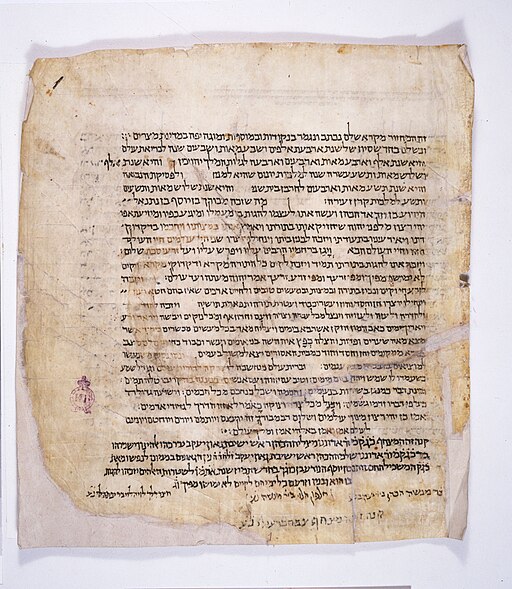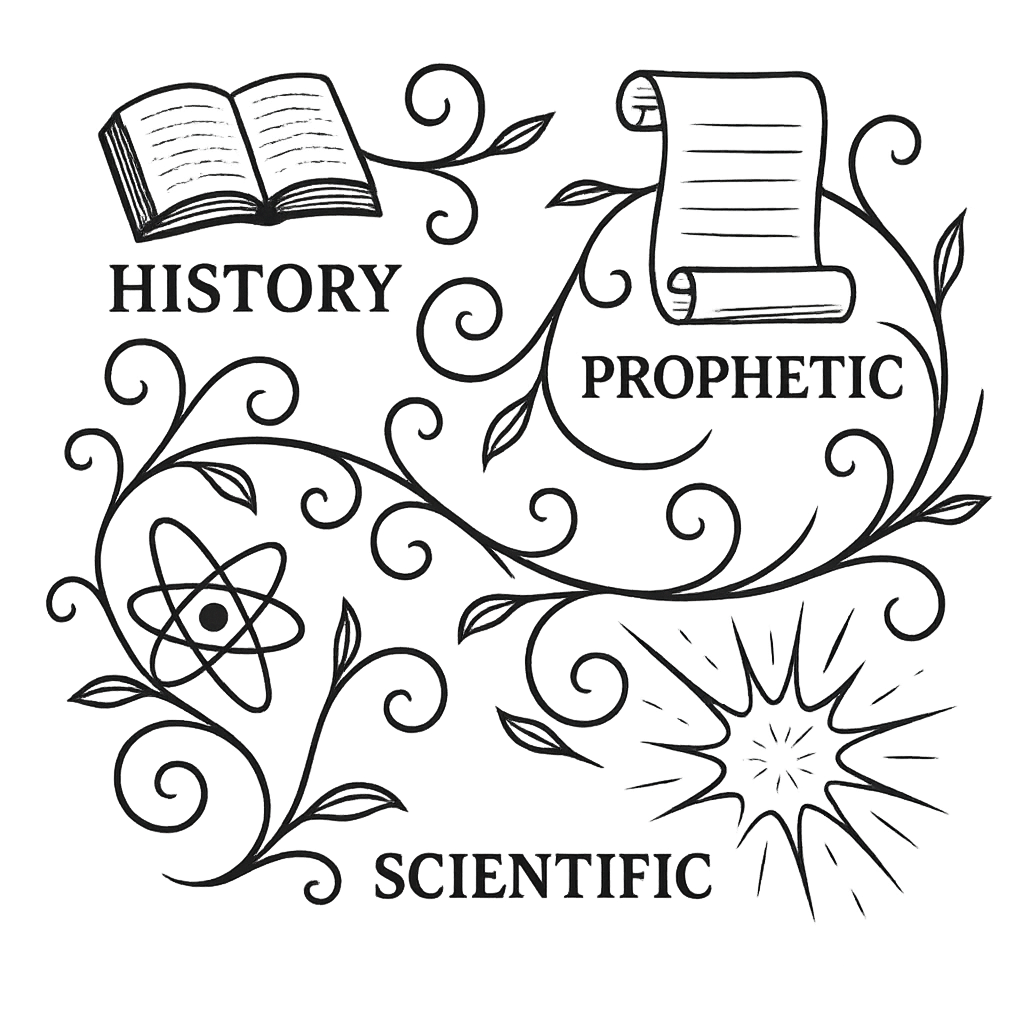
🧭 Introduction
The Masoretic Text (MT) is the traditional Hebrew version of the Old Testament, carefully copied and standardized by Jewish scribes known as the Masoretes between the 6th and 10th centuries CE. While the Masoretic manuscripts themselves are relatively late, the text they preserve reflects Hebrew Scriptures written roughly between the 12th and 2nd centuries BCE. Unlike the Septuagint, which is a Greek translation of the Hebrew Bible, the Masoretic Text is not a translation. Instead, it is the archetype of the Hebrew Bible, meticulously preserved and transmitted by generations of scribes.
What makes the Masoretic Text unique is the system of vowel points, accents, and marginal notes added by the Masoretes. Ancient Hebrew — the original language of the Old Testament — was written with only consonants, which could leave words ambiguous. By adding vowels and detailed notes, the Masoretes ensured that the Scriptures would be read, pronounced, and understood consistently for all future generations. Without these markings, readers might misinterpret words or phrases, so the Masoretic system helped preserve the meaning of the text over centuries.
The Masoretic Text became the authoritative version of the Old Testament in Judaism. Even today, most modern Old Testament translations in Christianity are based primarily on it, making it one of the most influential texts in history.
📜 Discovery and Manuscript Evidence
How many manuscripts survive today?
While the Septuagint has thousands of surviving copies, the Masoretic Text survives in fewer but highly controlled manuscripts, reflecting the Masoretes’ extraordinary precision.
Major Manuscripts:
- Aleppo Codex (c. 930 CE) – Once considered the most authoritative copy of the MT, though parts were lost in the 20th century.
- Leningrad Codex (1008 CE) – The oldest complete manuscript of the MT; it serves as the basis for most printed Hebrew Bibles today, including the Biblia Hebraica Stuttgartensia — a modern scholarly edition of the Masoretic Text used by most biblical scholars and translators
- Cairo Codex of the Prophets (895 CE) – Contains much of the prophetic books and is among the earliest dated MT manuscripts.
Dead Sea Scrolls (Qumran, 250 BCE – 70 CE):
The Dead Sea Scrolls are much older than the Masoretic manuscripts but show remarkable alignment with them. While the Scrolls also preserve variant Hebrew texts (some closer to the Septuagint), many fragments match the MT almost word-for-word. This confirms that the Masoretic tradition was rooted in ancient Hebrew copies long before the Masoretes added their vowel system.
Why this matters:
The consistency between the Masoretic manuscripts and earlier Hebrew texts demonstrates that the MT was not a new creation but a careful preservation of the Scriptures. The Masoretes’ work guaranteed the survival of the Hebrew Bible with astonishing accuracy.
📖 Biblical Significance
- Jewish Tradition: The Masoretic Text became the foundation of Rabbinic Judaism and remains the version used in synagogues today.
- Christian Tradition: Most modern Bible translations (KJV, NIV, ESV, etc.) base their Old Testament primarily on the MT, while consulting the Septuagint and Dead Sea Scrolls to clarify differences.
- Textual Reliability: Scholars frequently highlight the precision of the Masoretes. Copying rules were so strict that Masoretic scribes would count every letter, word, and verse to ensure no errors were made. This devotion preserved the Hebrew Scriptures with exceptional stability. Even a single error could require a scroll to be discarded. This devotion preserved the Hebrew Scriptures with exceptional stability.
📜 Historical Significance
The Masoretic Text holds immense historical value. It represents the Jewish community’s determination to protect and standardize the Hebrew Bible after centuries of dispersion and textual diversity. While the Septuagint reflects how Jews translated Scripture for the Greek-speaking world, the MT represents how Jewish scribes preserved the original Hebrew language Scriptures with unparalleled care.
The Masoretes’ addition of vowels and notes was not a rewriting of the Bible but a safeguarding of its ancient meaning. Their work ensured that the Hebrew Bible could be read the same way in every generation, leaving no doubt about pronunciation or interpretation.
⚖️ Authenticity and Scholarly Debate
Scholars universally recognize the Masoretic Text as the authentic Hebrew Bible. The main debates focus not on its legitimacy but on how it relates to earlier Hebrew forms of the text preserved in the Dead Sea Scrolls or reflected in the Septuagint.
For example:
- Psalms 22:16 – The Masoretic Text reads “like a lion are my hands and feet,” while the Septuagint reads “they pierced my hands and my feet.” The Dead Sea Scrolls offer evidence that variations in Hebrew existed before the MT was finalized.
- Jeremiah – The MT version is longer than the Septuagint version, suggesting either expansions in the Hebrew tradition behind the MT or omissions in the tradition behind the LXX.
These examples show that while the MT became the standard, it is part of a broader textual history. Importantly, the vast majority of the MT aligns with both earlier Hebrew manuscripts and the Septuagint, demonstrating the overall stability of the biblical text.
✍️ Differences with the Septuagint
While both traditions preserve the same core Scriptures and agree on the vast majority (~95%+) of wording and meaning, they are not identical. Differences tend to cluster around certain books:
- Books Included:
- The Septuagint contains additional writings not in the Masoretic Text, such as Tobit, Judith, Sirach, Baruch, Wisdom of Solomon, and 1–4 Maccabees.
- These books are considered Deuterocanonical by Catholics and Orthodox, but Apocrypha by Protestants.
- Arrangement:
- The Septuagint often groups and orders books differently.
- Example: Jeremiah appears in a shorter, reorganized form; Psalms sometimes follow a different numbering system.
- Textual Variations:
- Jeremiah – The LXX version is about one-eighth shorter than the MT.
- Daniel – The LXX contains extra sections (Susanna, Bel and the Dragon) absent from the MT.
- Psalms 22:16 – MT: “like a lion are my hands and feet”; LXX: “they pierced my hands and my feet.” The Dead Sea Scrolls confirm that different Hebrew versions of this verse existed before the MT was finalized.
These differences do not undermine either tradition but highlight the complex history of the biblical text and the value of comparing both traditions for accuracy.
🏛️ Why This Discovery Matters: Historical Validation
The Masoretic Text is more than a manuscript tradition — it is the reason we still have a unified Hebrew Bible today. It bridges the ancient Hebrew Scriptures with the medieval and modern worlds, ensuring that the text survived intact despite wars, exiles, and dispersions.
By comparing the Masoretic Text with the Septuagint and the Dead Sea Scrolls, scholars can trace the development of the Old Testament with extraordinary clarity. Far from undermining Scripture, these comparisons confirm its historical reliability, showing how carefully it was transmitted across languages, regions, and centuries.
📚 References & Image Credits
- Britannica. “Masoretic Text.” Available here.
- Tov, Emanuel. Textual Criticism of the Hebrew Bible. Fortress Press, 2012.
- Dead Sea Scrolls Digital Project. Israel Museum, Jerusalem.
- Image: “Folio 001a of the Leningrad Codex.” Wikimedia Commons, 9 Dec. 2024, Available here. Public domain.

Leave a Reply